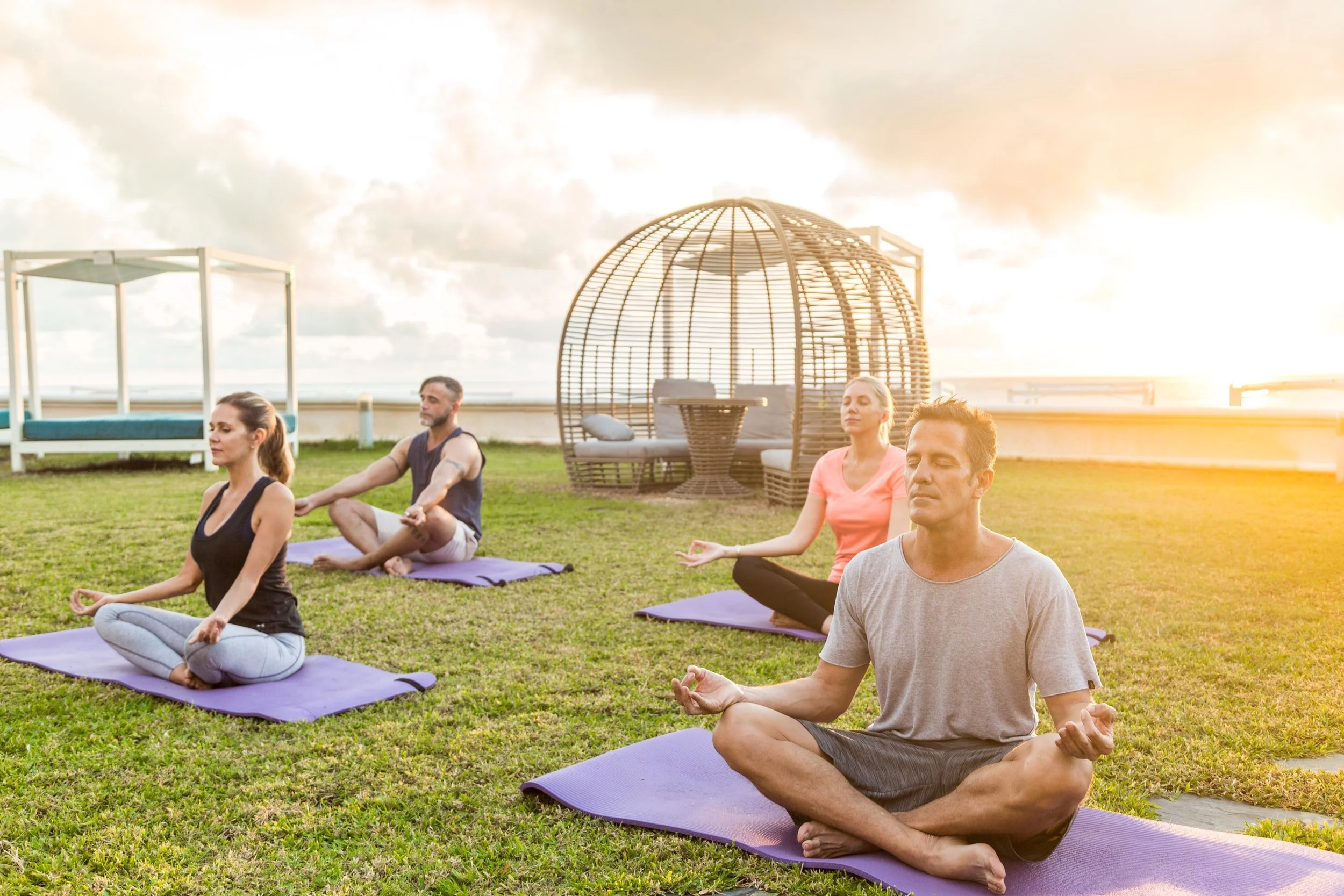What is a panic attack? Three effective techniques for dealing with a panic attack.
Three of the best techniques for dealing with panic attacks
Panic attacks can be defeated. It is enough to know these 3 best techniques to cope with any panic attack, and eventually get rid of them altogether.
Of course, there are many more techniques and methods, and for some, other techniques have become the best or even the only ones that work. We will not argue. To each, as they say, his own. But we recommend starting with these three techniques, because they have been shown to work for most people.
So, here are the three best techniques for dealing with panic attacks:
Calming breathing technique
The technique of calming breathing is great for quickly stopping a panic attack, as well as for preventing their occurrence in the future. It is generally useful to do this exercise in any stressful situations, life stresses, fatigue, both mental and physical, and other incomprehensible states of the psyche.
The main principle of this breathing is a short and quick full inhalation (both the stomach and chest are inflated) and a slow passive exhalation. After exhalation, a short pause is made. For example, this breathing rhythm: a quick inhalation for 2 counts, and immediately without delay, a long, slow exhalation for 4 - 6 counts with relaxation. After exhalation, there is a delay of 1 - 2 counts.
Repeat several times until the attack stops or decreases markedly. Then breathe normally, gradually calming down.
Why are we offering counting and not seconds? It's just that everyone has a different speed of inhalation and exhalation, so it is better to count “one and, two and” to yourself, and not follow the seconds. In addition, mental speaking also calms and distracts from disturbing thoughts.
The most correct way to perform such an exhalation is to make the sound "Pffff ..." with your lips. But without tension, completely relaxed. You all know how to do that. We usually do this when we are very tired, and there is still a lot of work to do. And we do a kind of doomed "Pffff ...", as if we show that we are dead tired, and it would be better to go have a rest.
By using this type of breathing, you normalize your heart rate and lower your blood pressure.
It is important! Exhaling with relaxation means that you need to relax not only your stomach, but everything else: chest, shoulders, neck, jaw. The exhalation does not need to be forced, just let the air escape.
2. Fast walk
We will not tire of repeating that panic attacks in the overwhelming majority of cases are the result of stress accumulated in the body that is more than enough for a modern person. And in order not to go crazy, the body periodically tries to get rid of excess stress by all available means. Including in the form of panic attacks.
You can think of it as a natural "fuse" like in a TV. With each attack of a panic attack, tension is released, the autonomic nervous system calms down for a while, and the person for some time lives an ordinary, although not very happy life. And then everything repeats itself.
So that there are no such repetitions, you should independently remove excess tension in the body, without waiting for it to "boil".
The most ideal way to do this is by active walking. At least 40 - 60 minutes a day. I understand that many people with panic attacks find it very scary to go outside. But no one is forcing you to do this. Walk around your apartment. Even if it is not so interesting and even boring. But it WORKS!
Why walking and not running or other active modes of movement? The fact is that walking is the simplest action that we are all used to performing since childhood, and which does not force the body to strain unnecessarily. You can walk fast enough for an hour and hardly get tired. Try some other kind of vigorous physical activity and you will get tired very quickly. And fatigue is the same stress. You definitely don't need it.
Time is also important. As we already wrote, you need to walk at least 40 minutes a day. The trick is that stress causes the body to produce large amounts of cortisol. We need this hormone, but when there is too much of it, then various neuroses arise, including panic attacks. Unfortunately, it is not possible to quickly reduce cortisol levels. It just won't work. This is how our body works.
Therefore, you need to move a lot, but not get tired. Then cortisol will gradually decrease, and you, accordingly, calm down.
3. Exercise "Tension - relaxation"
Our muscles are unable to withstand two things - excessive, super-strong tension and excessive, super-strong stretching. If such a situation is created, then a special protective mechanism is turned on in them, designed to protect the muscle from rupture. This mechanism is spontaneous and complete muscle relaxation. That, in fact, is what we need - to spontaneously and completely relax the muscles of our body.
The trick of the exercise is that it helps to quickly relieve tension in the body, and if you do it periodically and several times a day, you can even get rid of muscle clamps. Try it yourself and see for yourself.
And finally: the proposed methods are not a one-time pill or a course of treatment that you have taken / followed and forgot. This should become a new healthy habit, like brushing your teeth or exercising in the morning. Because the stress will not go anywhere! And we need to get rid of tensions in the body constantly.
You just need to do “soothing breathing” a couple of times a day (for prevention and training), do the exercise “tension - relaxation” or just walk, but not under compulsion, but for your own pleasure. That's not difficult.
What is a panic attack?
Panic attack is a symptom of panic disorder, which is included in the international classification of diseases. Such conditions can occur from several times a day to several times a year. The amount depends on the severity of the disorder.
During a panic attack, a person's heartbeat suddenly increases, chest pain, choking, and dizziness appear. He thinks he is choking and is about to die. At the same time, what is happening to a person seems unreal. Panic attacks cannot be predicted as they do not depend on the specific situation.
Over time, panic attacks can progress. The range of possible causes increases, and attacks occur more often. Whether they have an effect on a person's physical health or not is not known.
How does a panic attack work?
The first panic attack, as a rule, begins with the body's normal physiological response to an event - stress, alcohol, heat, overwork, lack of sleep. But there is no direct relationship between the event and the occurrence of panic attacks. A person suddenly begins to have a strong heartbeat, there is a feeling of lack of air, weakness.
If the reason for the increased heart rate, dizziness or weakness is not obvious, then the person involuntarily begins to think: “What's wrong with me? What if it's something serious? " He thinks that he is having a heart attack or that he is going crazy. All of this causes fear and anxiety. The body begins to vigorously produce adrenaline and cortisol (stress hormone).
These hormones aggravate bodily symptoms and cause new ones - a person begins to paint terrible pictures of his future. The thought of imminent death scares and scares even more, panic begins, a new portion of adrenaline and cortisol is released.
After the first panic attack, a person remembers his state, but the thoughts that caused this panic do not. They become automatic and hard to catch. But it is these thoughts about their condition that in the future cause new panic attacks .
Panic Attack Facts
A panic attack in itself is not a health hazard.
A panic attack doesn't last forever.
This condition cannot be avoided or prevented.
Panic is a normal body reaction.
You can never find the cause of a panic attack - often there is none.
If you constantly listen to your condition, so as not to miss the moment when the panic begins, it can only do harm.
It is not the symptoms that need to be dealt with, but the disturbing thoughts that trigger the attack.













